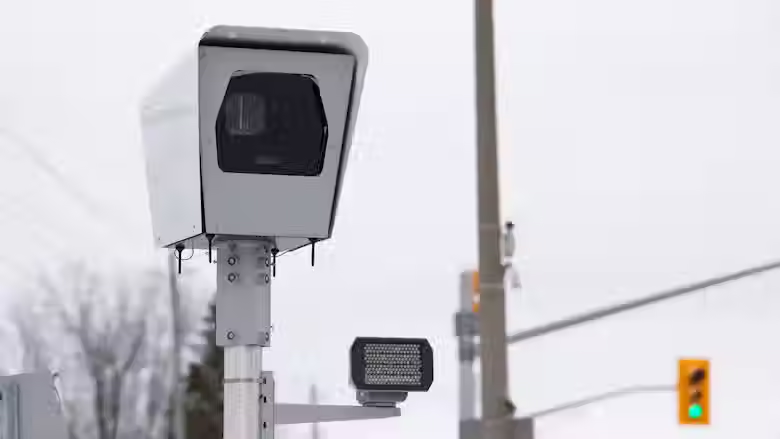Speed Camera nets $170,000 in four months
- Casandra Turnbull
- Jun 24
- 4 min read

By Casandra Turnbull
Managing Editor
Brant County’s Automated Speed Enforcement (ASE) pilot is already yielding results, slashing speeding by nearly half and raising $170,000 in revenue to support future road safety improvements.
The program, introduced as part of the County’s Brant Safe Streets Strategy, aims to reduce speeding and improve safety in designated Community Safety Zones, particularly near schools. The first update on the ASE program’s performance was presented to the County’s Administration and Operations Committee on June 17, prompting discussion from councillors and staff.
The pilot ASE camera was installed last fall on Silver Street in front of North Ward Public School. Between October 2024 and January 2025, signage was installed and a public awareness campaign launched. Testing followed, with full enforcement and ticketing beginning in February 2025.
In its first four months of operation, $271,000 of fines were issued. The program expenses to date are roughly $100,000 and this includes the victim surcharge collected by the county and remitted to the Ministry of Transportation, as well as technology fees, and expenses like mailing, materials, etc. The estimated net revenue from February to May is approximately $170,000. That revenue is being reinvested into the ASE program to support its ongoing operations, fund future expansion, and back broader road safety initiatives, ensuring transparent reinvestment into traffic calming, pedestrian safety, education campaigns, and infrastructure improvements like radar speed signs and safer crossings.
Although the camera detected more than 25,000 speeding incidents over four months—about 6,000 per month—only 2,204 penalty orders were issued. A provincial offences officer reviews each case before a ticket is mailed, factoring in repeat offences on the same day, minor speeding below a set threshold, emergency vehicle status, and other variables such as license plate visibility or adverse weather.
Around 75% of the fines have been collected and the county has started issuing past due notices to registered owners for the remaining 25% of unpaid tickets. Unpaid tickets will be sent to the Defaulted Fines Control Centre and must be paid before the driver can renew their license.
“The initial success of the ASE pilot provides a strong foundation for stabilizing and growing the program,” County staff noted in the report.
Paris Coun. John Bell said the reduction in speeding is great to see but asked county staff if it is their expected outcome of the program.
Haley Gilmore responded, “I would say yes, based on the business case we brought forward in 2024,” adding, it’s in line with how they predicted speeding would decrease in the area. Gilmore and Greg Bergeron were on hand to answer questions during the meeting.
Data collected from Silver Street shows promising results. The percentage of speeding vehicles dropped from 64 per cent in September 2024 to 33 per cent in May 2025. Average speeds in the zone decreased from 43.5 km/h to 37.8 km/h.
Enforcement data also indicates a high level of activity. Looking at each month:
6,208 speeders caught on camera in February
6,542 in March
6,351 in April
5,377 in May
The drop in May is partly attributed to a camera theft that disabled the device between May 18 and May 31, although data tracking continued during that time. Between February and May, 225 repeat offenders were recorded, with one vehicle owner receiving six tickets.
With its own processing centre, the County has tailored its approach to avoid issuing multiple tickets before a driver receives the first one—a move designed to encourage behavioural change rather than overwhelm residents with fines.
Municipalities across Ontario have grappled with the volume of tickets generated by ASE systems. The City of Vaughan, for example, temporarily paused its ticketing program this summer in response to concerns from the public about a high volume of tickets being issued in a short period of time. One camera captured nearly 9,800 violations in a three-week period.
When asked if the county would consider pausing tickets during the summer months, if the primary goal was to protect the safety of children during school hours, their response was ‘no’ because it counters the broader goal of changing driver behaviour at all times of day.
While the County’s data does not break down speeding by time of day, it does offer a useful comparison. Before October 1, 2024, Silver Street had a 40 km/h speed limit only during school hours. Since making it a permanent 40 km/h zone and activating the speed camera, the percentage of speeding vehicles dropped from 64 per cent in September to 33 per cent in May. County staff say this demonstrates the camera’s effectiveness, particularly during key times like school drop-off and pick-up.
The County plans to report ASE program data twice annually—in summer and winter—to align with Ministry of Transportation guidelines. In future reports, staff have committed to exploring the inclusion of more detailed data, including when speeding peaks during specific times of day and the percentage of penalty orders issued to local residents versus out-of-town motorists or tourists.
Expansion is already underway, with a second ASE camera scheduled for installation on Beverly Street in St. George, near the local school, by September. Signage is currently being prepared. A third camera will be installed later this year in the Community Safety Zone near Mount Pleasant School.
Coun. Steve Howes questioned the program’s expansion, recalling previous meetings where it was discussed that a camera would be installed on Grand River Street North in front of Paris District High School. “Do you have an estimate when that will come?” he asked.
Gilmore and Bergeron couldn’t give an exact date but said likely next year.
As Brant expands its ASE program, officials remain focused on leveraging data and revenue to build safer streets and shape long-term driving habits across the County.




Comments